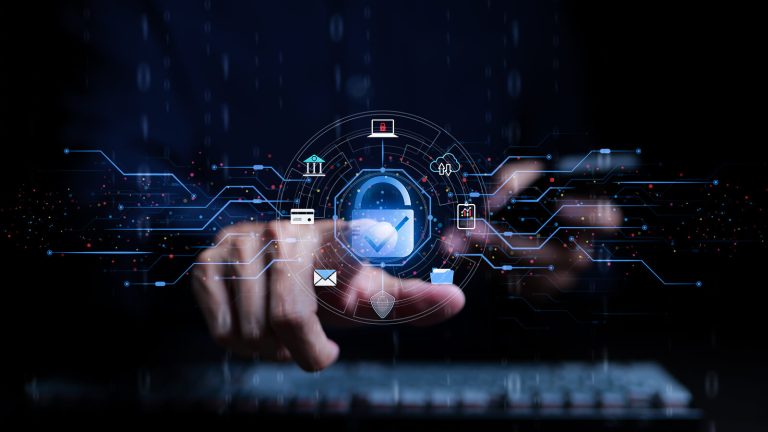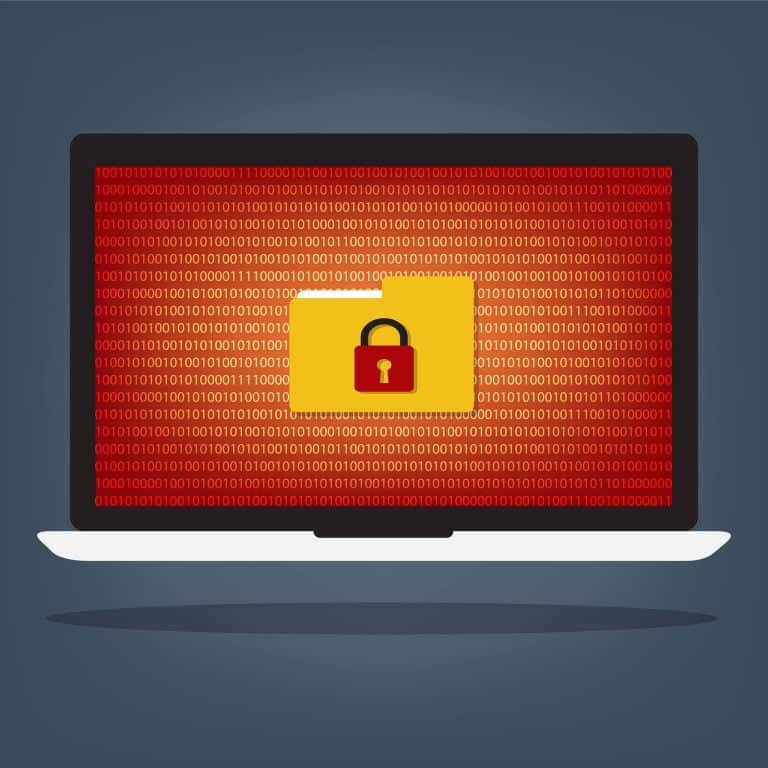In recent years, cybersecurity breaches have become a concern for businesses across various industries. One area that has been particularly vulnerable to such attacks is SAP (Systems, Applications, and Products) software. While most companies rely on SAP technology to manage their operations, few know the hidden dangers that come with it.
Table of Contents
ToggleSAP systems store a vast amount of sensitive data, including financial information, customer records, and employee details. A successful cyberattack on these systems can lead to data theft and cause significant disruptions in business operations. This article will explore the hidden dangers of SAP cybersecurity breaches and provide insights into how businesses can protect themselves from such threats.
Understanding the Threat of Cybersecurity Breaches
SAP cybersecurity breaches are becoming increasingly prevalent and detrimental for organizations worldwide. These attacks can result in massive financial losses, reputational damage, and legal repercussions. The danger lies in the sensitive information that SAP systems contain, such as financial data, customer information, and intellectual property.
Moreover, cybercriminals are getting more sophisticated in their attack methods by exploiting vulnerabilities within an organization’s SAP landscape. These vulnerabilities range from outdated software to weak passwords and unsecured system configurations. In addition, attackers often use social engineering tactics to trick employees into giving them access to the system or sensitive information.
As a result, understanding the threat to information security and cyber breaches is crucial for businesses that want to protect themselves against these kinds of attacks. Organizations need to implement robust security measures such as regular updates and patches alongside employee training programs to safeguard their SAP systems from potential threats. By doing so, they can ensure that their critical business operations remain uninterrupted while also mitigating any potential damage caused by a breach. Master SAP IBP Training to achieve success in your career!
Overview of SAP Systems:
SAP Systems are complex and sophisticated enterprise resource planning (ERP) software solutions businesses use worldwide. They provide various functions that cater to different organizational departments, such as finance, sales, logistics, procurement, and human resources. The core feature of SAP systems is the integration of various business processes across all departments.
However, with the increasing reliance on technology for business operations comes an increased risk of cyber attacks. Breaches in SAP systems can result in significant financial losses and damage to a company’s reputation. Attackers often target SAP systems because they house sensitive financial information, personal employee data, and confidential business strategies.
To mitigate these risks, companies must ensure their SAP systems are well-protected against potential threats. This includes implementing security measures such as access controls and regular system updates. Additionally, regular training programs should be provided to employees to raise awareness about cyber threats and best practices for cybersecurity hygiene. Develop your SAP FICO skills to succeed in your job!
Types of Cybersecurity Threats:
One of the most common types of cybersecurity threats is phishing attacks. Phishing occurs when a cybercriminal sends an email or message that appears to come from a legitimate source, such as a bank or company. The intention is to deceive the recipient into giving out private information, including login details or financial information. Another type of threat is malware, which refers to any software designed to cause harm to computer systems. Malware can appear in various formats, such as Trojan horses, worms, and viruses.
A third type of threat is ransomware, which has become increasingly prevalent in recent years. Ransomware encrypts a victim’s files and demands money in return for the key to unlock them. This type of attack can be especially damaging for businesses and organizations that rely on their data for day-to-day operations. Other types of cybersecurity threats include denial-of-service attacks (DoS), which overload web servers with traffic until they crash; password attacks, where hackers try to guess passwords through brute-force methods; and man-in-the-middle attacks (MITM), where attackers intercept communications between two parties and secretly modify them for malicious purposes.
Explaining Internal and External Dangers
Internal and external dangers are two sides of the same coin when it comes to cybersecurity breaches. Internal dangers refer to the risks that arise from within an organization, such as employees who have access to sensitive information but may misuse or leak it intentionally or unintentionally. This can occur due to a lack of awareness, insufficient security measures, or disgruntled employees with malicious intent.
External dangers, on the other hand, come from outside an organization and can include hackers attempting to gain unauthorized access to systems and data. These attacks can be sophisticated and difficult to detect but often leave tell-tale signs such as unusual network activity or data breaches.
In the case of SAP cybersecurity breaches, both internal and external dangers are significant concerns for any organization using this software. With so much sensitive data stored in these systems, a single breach could have massive consequences for businesses’ clients, operations, reputation, and more. Therefore organizations must take appropriate measures by investing in comprehensive security solutions that address both internal and external threats while also providing ongoing training for their staff members on best practices toward cybersecurity hygiene.
Detailing Financial, Reputational, and Legal Risks with SAP Systems
The repercussions of a cybersecurity breach can be catastrophic for any organization. The risks associated with such attacks are not limited to financial damages and data loss. Financial risks include the cost of repairing damaged systems, legal fees, and regulatory penalties. Moreover, organizations may suffer from reputational damage due to negative publicity and the loss of customer trust.
Furthermore, in cases where sensitive information is compromised, companies may face lawsuits from individuals or groups whose private data has been exposed. Legal proceedings are expensive and time-consuming and can potentially cause long-term harm to an organization’s reputation.
To minimize the risk of cybersecurity breaches, it is crucial for organizations to take proactive measures such as regular system updates, employee training programs on security awareness, and implementing strong access controls. Investing in effective cybersecurity measures helps protect sensitive information and safeguards an organization’s finances and reputation.
Prevention Techniques with SAP Systems
Prevention techniques are crucial in ensuring that SAP cybersecurity breaches do not occur. One of the key prevention techniques is to ensure that only authorized personnel have access to all SAP systems. This can be achieved by properly managing user accounts and privileges and regularly monitoring user activity within the system.
Another effective prevention technique is to ensure that all SAP systems are kept up-to-date with the latest security patches and updates. This helps to plug any existing vulnerabilities that hackers might exploit and also improves the overall security posture of the system. It is also important to regularly conduct vulnerability assessments and penetration testing on all SAP systems to identify any potential weaknesses or security gaps.
Finally, employee training and awareness programs are essential in preventing cybersecurity breaches within an organization. Employees must be educated on how cybercriminals operate, what they should look out for, and best practices for securing their devices while accessing company resources. By implementing these prevention techniques, organizations can minimize their risk of a devastating SAP cybersecurity breach and protect sensitive data from falling into the wrong hands.
Suggesting Best Practices for Securing Your SAP System
Securing your system from cybersecurity breaches is essential in today’s digital age. Uncovering the hidden dangers of SAP cybersecurity breaches, it is crucial to understand that prevention is better than cure. One of the best practices for securing your system and preventing cyber attacks is strengthening passwords and implementing multi-factor authentication.
Another important aspect is regularly updating software and installing patches to avoid vulnerabilities that hackers can exploit. It’s also recommended to limit access privileges so that only authorized individuals can make changes or access sensitive data within the system. Regularly monitoring user activity logs can help detect unusual behavior, which can indicate an ongoing cyber attack.
In addition, educating employees about cybersecurity threats and safe computing practices should not be overlooked as they are often considered the weakest link in any organization’s security infrastructure. By following these best practices, organizations can minimize their risk of becoming a victim of a cyber attack and prevent potential damage to their systems and reputation.
How to Act Fast to Mitigate Risk
The consequences of a cybersecurity breach can be devastating for any organization, especially when it comes to SAP systems. Therefore, taking action quickly is essential to mitigate potential risks and minimize the damage caused by such attacks. The first step in acting fast is detecting the breach as soon as possible. This means having robust monitoring tools and processes in place that can identify unusual activity within SAP environments.
Once a breach has been detected, swift action must be taken to isolate and contain the issue before it spreads further. This could involve disabling user accounts or disconnecting affected systems from the network. From there, it’s critical to investigate the root cause of the breach so that vulnerabilities can be identified and addressed promptly. It’s also essential to have contingency plans in place should similar attacks occur in the future, which may include regular system backups or implementing additional security measures. By acting fast and taking these steps proactively, organizations can better protect themselves against potential cyber threats and ensure that their operations remain secure at all times.
Conclusion:
In conclusion, it is crucial for companies to prioritize their SAP cybersecurity measures. The potential consequences of a breach can be catastrophic, from financial losses and reputational damage to legal liabilities and regulatory fines. It’s not just a matter of protecting sensitive data but also safeguarding the entire business process that relies on SAP systems.
To effectively address this issue, organizations should adopt a proactive approach to security instead of reactive measures. This means implementing solutions such as real-time monitoring, vulnerability testing, access controls, and user training. Additionally, companies need to stay up-to-date with the latest security patches and software updates regularly.
Overall, investing in robust cybersecurity practices will pay off in the long run by mitigating risks and preserving business continuity. By taking action now to secure your SAP environment today, you can avoid potentially disastrous outcomes tomorrow.
FAQ
A: SAP (Systems, Applications, and Products) is a leading provider of enterprise software used by organizations worldwide for various critical business functions. SAP systems contain vast amounts of sensitive data, making them an attractive target for cybercriminals. SAP cybersecurity is crucial to protect this data, maintain system integrity, and prevent unauthorized access, data breaches, financial fraud, or disruption of business operations.
A: SAP cybersecurity breaches can pose significant dangers to organizations, including:
1. Data Breaches: Breaches can result in unauthorized access to sensitive data, including customer information, financial records, and intellectual property.
2. Financial Loss: Breaches may lead to financial loss through theft, fraud, or ransom demands. They can also result in regulatory fines, legal penalties, and damage to the organization’s reputation.
3. Operational Disruption: Cyberattacks can disrupt SAP systems, causing system outages, operational inefficiencies, and downtime that affect business processes and continuity.
4. Compliance and Regulatory Risks: Breaches may violate data protection regulations, industry standards, and contractual obligations, leading to compliance issues and potential legal consequences.
5. Supply Chain Risks: SAP breaches can impact the entire supply chain, compromising vendor relationships, data sharing, and the security of interconnected systems.
A: Cybercriminals often exploit various vulnerabilities in SAP systems, including:
1. Unpatched or Outdated Software: Failure to apply security patches and updates can leave SAP systems vulnerable to known exploits.
2. Misconfigured Security Settings: Inadequate security configurations, weak access controls, or improper privilege assignments can provide avenues for unauthorized access.
3. Weak Passwords: Weak or easily guessable passwords can be exploited by attackers to gain unauthorized access to SAP systems.
4. Vulnerable Interfaces and Integrations: Insecure connections, weak protocols, or misconfigured interfaces can create entry points for attackers.
5. Insufficient User Training and Awareness: Lack of cybersecurity awareness among SAP users can lead to unintentional actions that compromise system security, such as falling victim to phishing attacks or social engineering.
A: Organizations can enhance SAP cybersecurity by implementing the following measures:
1. Regular Patching and Updates: Keep SAP systems up to date with the latest security patches and updates to address known vulnerabilities.
2. Strong Access Controls: Implement robust user authentication, authorization mechanisms, and role-based access controls to ensure appropriate access rights.
3. Secure Configurations: Configure SAP systems securely, including secure network configurations, encryption, and secure communication protocols.
4. User Awareness and Training: Educate SAP system users about cybersecurity best practices, such as recognizing phishing attempts, protecting passwords, and reporting suspicious activities.
5. Continuous Monitoring and Threat Detection: Deploy security monitoring tools and techniques to identify and respond to potential threats in real-time, including anomaly detection, intrusion prevention systems, and log analysis.
A: Yes, there are specialized tools and services available to enhance SAP cybersecurity. These include:
1. SAP Security Assessment Tools: Tools specifically designed to assess and identify vulnerabilities in SAP systems, such as SAP Code Vulnerability Analyzer (CVA) and SAP Security Optimization Service (SOS).
2. SAP Security Solutions: Integrated security solutions offered by SAP, including access control, identity management, and threat detection tools.
3. Third-Party SAP Security Services: Companies specializing in SAP cybersecurity provide services such as vulnerability assessments, penetration testing, security audits, and ongoing monitoring to help organizations protect their SAP systems effectively. Organizations should consider a combination of these tools, services, and best practices to establish a robust SAP cybersecurity framework.





